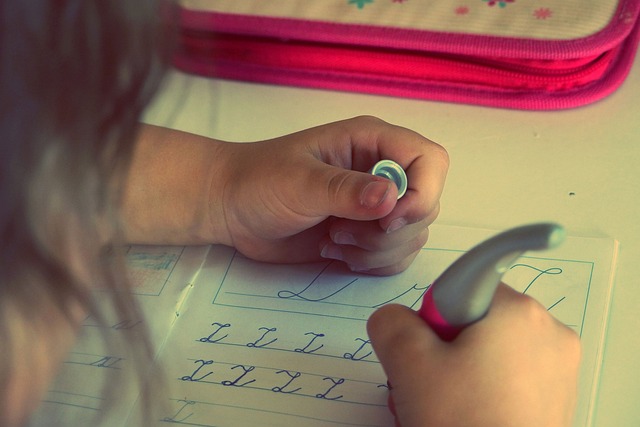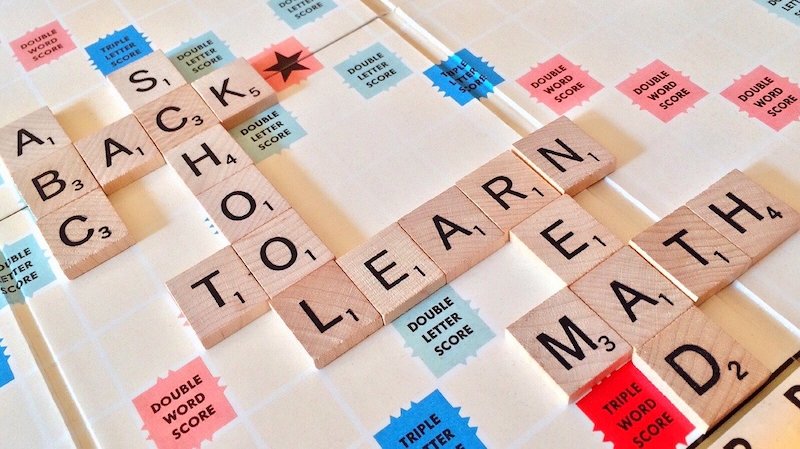In various schools across the West, it appears handwriting is becoming a less valued skill. As such, many early years schools have children write in block letters during their early years of education before switching to computer input for subsequent grades. Is this a nod to technological advancement or an unfortunate mistake that limits development? Does having good penmanship still matter in our post-industrial world?
The skill of writing is a very important tool both for studies and for any sphere of activity. Being able to write quickly and competently helps to take notes, express your own thoughts, and communicate with people. Writing combines a great number of other skills: holding a pen or pencil, focusing attention, remembering and then reconstructing all the letter shapes and formulating thoughts into words.
It is important to remember that writing is closely related to reading, speaking, and listening. Learning to write is learning grammar, spelling, punctuation, and penmanship. As with any skill, only practice makes perfect.
Writing Helps Develop Children’s Cognitive Abilities
As the brain develops, millions of synaptic connections are formed. Writing (like playing or working with objects) stimulates brain activity and the development of these connections. When a child writes by hand, his brain actively works and develops. This is also confirmed by science. According to a 2016 study by University of Washington professors published in 2016, handwriting develops thinking. Scientists used functional magnetic resonance imaging and found: the process of writing more strongly activates those areas of the cerebral cortex that are responsible for memory and assimilation of new information.
Learning to Write is an Important Stage in a Child’s Development

Developing coordination and dexterity, especially of small movements with the hands and fingers, is a direct outcome from practicing writing. Furthermore, tying shoelaces or opening boxes may be related to this skill as well. After gaining fluency in handwriting techniques these activities become automatic processes; children no longer have to think about how to form letters when they write but instead can focus on their task.
Writing Promotes Recognition and Memorization
Evidence from both schools and adults prove that people are more literate in words they learn through handwriting than those learned with a computer. Writing by hand helps students better remember, construct, and recognize letters. Additionally, it heightens one’s attention to information which assists our brains when organizing data.
This, too, has been confirmed by experimental methods. Researchers from Princeton and California universities asked students to listen to a lecture and write down an outline in any convenient way. After that, the experts analyzed the recordings and asked the students what they had managed to memorize. It turned out that those who chose to write by hand remembered the main idea of the lecture and the conclusions that followed from it better. Why? Because they had to analyze the information, rethink it, and write down the most key points.

Writing and Reading are Two Interdependent Skills
Reading and writing are inextricably linked to one another because they both rely on the brain’s ability to process, understand, and remember information. If a child does not learn proper handwriting techniques or fails to develop sufficient writing skills, this can adversely influence their reading comprehension as well. From understanding text contextually to deciphering words phonetically or spelling them correctly. Poor written expression can even stunt a child’s cognitive development by reducing their capacity for concentration due to difficulties taking notes properly.
Ways to Help Improve Your Child’s Writing Skills
Bad habits are hard to get rid of, so it’s important to learn how to write correctly from the beginning. Good writing supplies can be a serious motivator for engaging children in writing. So how can you help younger kids learn to write? Experienced writers at https://collegepaperwritingservice.org/ suggest a few ways to get children’ writing on the right track.
Read, Read, and Read Again
If you want to improve your child’s written English, you need to start with reading. First read to your kids, then read with them, then encourage them to read on their own. Read all kinds of literature: short poems, fairy tales, stories and even different signs and announcements. When reading to children, it’s a good idea to use a pointer or pencil, drawing across the text you’re reading, so that the images of the letters are imprinted in the future writers’ memory.

Use Visuals
Let the letters be in front of the child’s eyes as often as possible. Posters on the walls, bright large inscriptions on the board or door, badges with names on the chest will be an excellent solution.
Teach Kids How to Use a Diary
Let the children keep an illustrated journal of their lives, bringing in the most significant events of the day. A prerequisite is that a child needs to sign every picture or photo. You can discuss what is written in the journal. This would be a great exercise for the development of speaking skills. Double benefit.
Playing With Words
You can start by making words out of already written letters. The legendary Scrabble game is a great option. There are desktop and online versions. Crossword puzzles are also indispensable. Such games allow children to remember the icons of letters, as well as expand their vocabulary.

Play Writing
The main activity at this age is playing. It is through play that children perceive and absorb new information most easily and quickly. What can you offer children?
- Workbooks or worksheets where they can trace already written letters.
- Coloring books where the children can vividly design a letter.
- “Connect the dots” puzzles which will result in a letter.
- Different materials for writing. You can write not only on paper but also on sand, flour, salt, etc. It is possible to do it with a finger or a thin stick.
Use Technology
Although too much technology can be overwhelming and distracting, it can also be used in a positive way to help improve writing skills. Introduce your child to different typing programs and age-appropriate apps that focus on practicing letter formation, vocabulary building and even sentence structure. Also, you could create joint projects with your child using software like Microsoft Word or Google Drive.
Speaking about the students, https://cheappaperwriting.com/cheap-essay-help/ can also be a useful resource for students to refine their writing skills and gain valuable tips from experienced writers.













